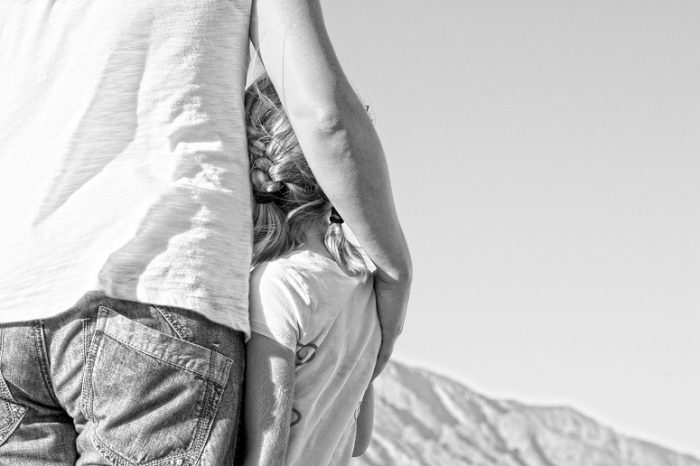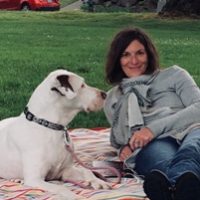Riddle: It is considered the biggest unaddressed public health concern, impacting most of the public, but kept hidden from the public. (1)
Answer: Childhood trauma.
Trauma sticks like neuro-physiological glue beyond the age of the traumatized child well into adulthood, impacting future medical and psychological health.
The photos released this summer of immigrant children detained and separated from their parents hauntingly reminded me of the hollow look in my nephews’ eyes the day I visited them 11 years ago at the Boulder County Department of Health and Human Services. They had recently been separated from their parents and placed in foster care after their dad had murdered their mother (my sister).
Although their living conditions were far better than the immigrant children, separation from parents for any reason produces the same fear, confusion, and distrust in a child’s eyes.
My sister’s murder was no accident, nor were the reasons she ended up with this particular person. We were raised in a chaotic household whirling in alcoholism, verbal and emotional abuse, parental absenteeism, molestation, and chronic marital discord. My sister’s and my choice of partners was rooted in childhood trauma and abuse that played out like unfinished business at a poker table of unhealthy adult life choices.
The Secrecy of Childhood Abuse
Childhood trauma creates tremendous shame in our adult selves, and by keeping it hidden—behind closed doors and locked away in the corners of our psyche—it remains unaddressed and untreated. According to the ACE study, one out of every four adults has reported being abused as a child or raised in an abusive home.
The intensity and pain of shame can lead us into the grips of food, sex, drugs, smoking, alcohol, or rage, in order to cope. My sister’s childhood adversity led to addiction, depression, suicidal thoughts, and abusive partner relationships; and for me it led to an eating disorder and anxiety. Our unhealthy coping strategies led to more shame and an unending cycle of inescapable misery.
It makes sense to me that childhood trauma would be considered the greatest unaddressed public health concern—because it impacts all of us. See, trauma is a relationship problem because it often starts with abuse from another person, which severs our ability to fully trust, which then impacts future relationships with ourselves, others, and the world around us. And yet, we still crave connection.
In an evolutionary sense, we need each other to survive—we are social creatures.
An 80-year Harvard Study of Adult Development even concluded that “loneliness kills…it is as powerful as smoking or alcoholism.”
With loneliness often comes shame, or the “silent epidemic” as Brené Brown calls it—it is an intense and painful emotion that makes us feel disconnected from our bodies, other people, and the external world. Shame is like an invisible injury prone to inflammation by something as innocuous as a coworker providing criticism to something more life impacting, like the loss of a lover or job.
Guilt exclaims, “I did something bad,” whereas shame is heavy and booms, “I am bad. I am worthless.” When we feel shame, we feel stuck and focus less on repair and more on our stagnant and global sense of low self-worth.
And here I stand, juxtaposed like a string being pulled by the tension of my own childhood trauma and adult shame and tethered to the tension of my nephews and son, who have also been scarred by their own childhood adversity—murder, relocation, divorce. It is in this garden where I am learning to plant seeds rooted in trust, and with constant care and attention, cultivate our ability to give and receive love.
There will be times when shame drags us down into the darkness where we can no longer feel for the hands to help us up. Our voices become muddled and unable to express our pain. Our eyes close shut, not wanting to see who we are or how others may see us. And our skin creates a protective layer to prevent feeling anything from anyone or anything. We become cocooned within ourselves, isolated and alone.
We have all been there—acting out our shame in relationships by overaccommodating and pleasing, shaming others and being defensive, or avoiding others. With all three “shame shields” (as defined by Brené Brown), we lose who we are and become imprisoned into habitual and destructive patterns.
Healing from Within
Healing from shame starts with feeling safe in our bodies through self-love and self-compassion. I started my yoga practice about 13 years ago and it has been the greatest gift for my anxiety. It has taught me to feel safe in my body and trust myself with whatever experience is arising within.
Other ways to explore our bodies and cultivate safety and trust are with dancing, singing, Tai Chi, and massage therapy. We should also get comfortable asking ourselves: “When do I feel safe?” and “When do I feel loved?”
From there, we can start to face our world without fear, giving us the empowering ability to receive love. In shame, we recoil when someone extends a kind or loving gesture. We have all experienced cringing at compliments or feeling a lack of trust when someone shows us love or compassion—that is shame, the inability for us to receive anything that confirms our worth, our humanness, and our right to take up space.
The antidote to shame is receiving love.
We can cultivate trust in others by establishing healthy relationships, trying partner dancing, choir singing, hugging, caring for an animal, and joining an improv or trauma support group, where we can share our stories.
For my boys, I am transparent, honest, and encourage an open dialogue with them about domestic violence, our family history of abuse, and drug and alcohol abuse. I am a beacon in our home when I see abusive patterns arise among the four of us. I have learned to face my shame and talk about it openly with my children because the only way to move through shame is to share it with people we trust and who love us, unconditionally.
Double Dutch Jump Rope
I often imagine a girl in pigtails on the sidelines waiting to “jump in”—assessing it, almost rhythmically attuned to herself and the others holding the jump rope.
We have many chances to “jump in” to this public health concern, because like the arc of a swinging jump rope it starts with abuse and trauma and ends with the painful feelings of shame and isolation. We can all be more attuned with ourselves, our relationships, and our world.
As a parent, we can cultivate self-awareness of our personal histories of abuse, trauma, and shame, and stop the cycle with our own children. As partners and lovers, we can be more attuned to ourselves and our partners, and identify any arising shame, then address it with compassion. As people in the world who interact with other people, we can be more observant, curious, and gentle, and provide a space of loving-kindness and compassion.
~
“We do not have to be ashamed of what we are. As sentient beings we have wonderful backgrounds. These backgrounds may not be particularly enlightened or peaceful or intelligent. Nevertheless, we have soil good enough to cultivate; we can plant anything in it.” ~ Chögyam Trungpa
~
References:
(1) Robert Block, MD, FAAP—“Senate Health, Education, Labor, and Pensions Committee Hearing ‘Breaking the Silence on Child Abuse: Protection, Prevention, Intervention, and Deterrence.’”









Read 2 comments and reply